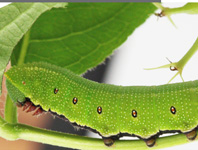Abstract
The poorly known genus Nilionympha Ren and Engel, 2007 in the subfamily of Gumillinae is updated and revised based on the reexamination of the type specimens and description of a new species Nilionympha shantouensis sp. nov. from the Middle Jurassic Jiulongshan Formation of Daohugou, Inner Mongolia, China. A further comparison between Nilionympha and other gumilline genera is provided to corroborate the generic status according to the updated diagnostic characters of forewing. The species Nilionympha imperfecta Ren and Engel, 2007 is transferred to the genus of Enodinympha.
References
Gao, T., Shih, C.K., Xu, X., Wang, S. & Ren, D. (2012) Mid-Mesozoic flea-like ectoparasites of feathered or haired vertebrates. Current Biology, 22 (8), 732–735.
https://doi.org/10.1016/j.cub.2012.03.012Gu, J., Montealegre-Z, F., Robert, D., Engel, M.S., Qiao, G. & Ren, D. (2012) Wing stridulation in a Jurassic katydid (Insecta, Orthoptera) produced low-pitched musical calls to attract females. Proceedings of the National Academy of Sciences of the United States of America, 109 (10), 3868–3873.
https://doi.org/10.1073/pnas.1118372109Jepson, J.E., Makarkin, V.N. & Coram, R.A. (2012) Lacewings (Insecta: Neuroptera) from the Lower Cretaceous Purbeck Limestone Group of southern England. Cretaceous Research, 34, 31–47.
https://doi.org/10.1016/j.cretres.2011.10.001Khramov, A.V. (2014) Lacewings of the family Osmylidae (Insecta: Neuroptera) from the Upper Jurassic of Asia. Paleontological Journal, 48, 300–309.
https://doi.org/10.1134/S0031030114030095Khramov, A.V. (2017) Jurassic Lacewings (Insecta: Neuroptera) of Western Siberia. Paleontological Journal, 51, 59–68.
https://doi.org/10.1134/S0031030117010063Martins, C.C., Ardila-Camacho, A. & Aspöck, U. (2016) Neotropical osmylids (Neuroptera, Osmylidae): three new species of Isostenosmylus Krüger, 1913, new distributional records, redescriptions, checklist and key for the Neotropical species. Zootaxa, 4149 (1), 1–66.
https://doi.org/10.11646/zootaxa.4149.1Martins-Neto, R.G. & Rodrigues, V.Z. (2010) New neuropteran insects (Osmylidae, Palaeoleontidae, Araripeneuridae and Psychopsidae) from the Santana Formation, Early Cretaceous NE Brazil. Journal of Geoscience, 6, 1–8.
https://doi.org/10.4013/gaea.2010.61.01Menon, F. & Makarkin, V.N. (2008) New fossil lacewings and antlions (Insecta, Neuroptera) from the lower Cretaceous Crato formation of Brazil. Palaeontology, 51, 149–162.
https://doi.org/10.1111/j.1475-4983.2007.00740.xMyskowiak, J., Huang, D.Y., Azar, D., Cai, C., Garrouste, R. & Nel, A. (2016) New lacewings (Insecta, Neuroptera, Osmylidae, Nymphidae) from the Lower Cretaceous Burmese amber and Crato Formation in Brazil. Cretaceous Research, 59, 214–227.
https://doi.org/10.1016/j.cretres.2015.10.029Navás, L. (1912) Insectos neurόpteros nuevos o poco conocidos. Memorias de la Real Academia de Cienciasy Artes de Barcelona, 10, 135–202.
New, T.R. (1983) A revision of the Australian Osmylidae: Kempyninae (Insecta: Neuroptera). Australian Journal of Zoology, 31, 393–420.
https://doi.org/10.1071/ZO9830393Panfilov, D.V. (1980) New representatives of Neuroptera from the Jurassic of the Karatau. In: Dolin, V.G., Panfiliov, D.V., Ponomarenko, A.G. & Pritykina, L.N. (Eds.), Extinct Insects of the Mesozoic. Naukova Dumka, Kiev, pp. 82–111. [in Russian]
Ren, D. & Engel, M.S. (2007) A split-footed lacewing and two epiosmylines from the Jurassic of China (Neuroptera). Annales Zoologici, 57, 211–219.
Ren, D., Shih, C.K., Gao, T., Yao, Y. & Zhao, Y. (2010) Silent stories—Insect fossil treasures from Dinosaur Era of the Northeastern China. Science Press, Beijing, 322 pp.
Ren, D. & Yin, J. (2002) A new Middle Jurassic species of Epiosmylus from Inner Mongolia, China (Neuroptera: Osmylidae). Acta Zootaxonomica sinica, 27, 274–277.
Wang, Mei, Rasnitsyn, P.A., Li, H., Shih, C.K, Sharkey, J.M. & Ren, D. (2015) Phylogenetic analyses elucidate the inter-relationships of Pamphilioidea (Hymenoptera, Symphyta). Cladistics, 32 (3), 239–260.
Wang, Y., Liu, Z. & Ren, D. (2009) A new fossil lacewing genus from the Middle Jurassic of Inner Mongolia, China (Neuroptera: Osmylidae). Zootaxa, 2034, 65–68.
Wang, Y., Liu, Z.Q., Wang, X., Shih, C.K., Zhao, Y.Y., Engel, M.S. & Ren, D. (2010) Ancient pinnate leaf mimesis among lacewings. Proceedings of the National Academy of Sciences of the United States of America, 107 (37), 16212–16215.
https://doi.org/10.1073/pnas.1006460107Wang, Y.J., Labandeira, C.C., Shih, C.K., Ding, Q.L., Wang, C., Zhao, Y.Y. & Ren, D. (2012) Jurassic mimicry between a hangingfly and a ginkgo from China. Proceedings of the National Academy of Sciences of the United States of America, 109 (50), 20514–20519.
https://doi.org/10.1073/pnas.1205517109Winterton, S., Zhao, J., Garzόn-Orduñ, I., Wang, Y. & Liu, Z. (2017) The phylogeny of lance lacewings (Neuroptera: Osmylidae). Systematic Entomology, 42, 555–574.
https://doi.org/10.1111/syen.12231Yang, Q., Makarkin, V.N. & Ren, D. (2010) Remarkable new genus of Gumillinae (Neuroptera: Osmylidae) from the Jurassic of China. Annals of Entomological Society of American, 103, 855–859.
https://doi.org/10.1603/AN10097Yao, Y., Cai, W., Xu, X., Shih, C.K., Engel, M.S., Zheng, X., Zhao, Y. & Ren, D. (2014) Blood-feeding true bugs in the early Cretaceous. Current Biology, 24 (15), 1786–1792.
https://doi.org/10.1016/j.cub.2014.06.045

